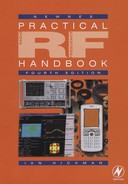Frequency allocations and designations
Frequency allocations
Frequency allocations are settled on a world-wide basis by WRC, the World Radio Conference, previously known as WARC, the World Administrative Radio Conference. The Conference, which is convened as necessary (usually every two or three years), is held under the aegis of the International Telecommunications Union (ITU), which is itself an organ of the United Nations. Implementation is down to individual countries, not all of which are represented at the WRC, while not all of those that are observe all of the allocations.
Annexe 1: Radio frequency spectrum management in the UK (part of Region 1)
In the UK, frequencies are allocated by Ofcom (The Office of Communications). This replaced the former Radio Communications Agency (an Executive Agency of the Department of Trade and Industry) as of 29th December 2003.
UK Frequency Allocation Table 2004
Published by Ofcom on behalf of the National Frequency Planning Group, a sub-committee of the Cabinet Official Committee on UK Spectrum Strategy, the UK Frequency Allocation Table covers the radio spectrum from 9 kHz to 275 GHz. It identifies the responsibility for management of frequency bands or services showing whether they are managed by Ofcom, the Ministry of Defence, or another Government Department or Agency. It also includes The International Telecommunication Union Table of Frequency Allocations contained in the current Radio Regulations. The document shows the position as at December 2004 and will be updated in due course in the light of spectrum policy decisions. In the meantime, more detailed and up-to-date information on the conditions applicable to frequency bands managed by Ofcom is available elsewhere on the Ofcom website: http://www.ofcom.org.uk.
In view of the changes expected within months of the publication of this book, further details are not given here, the reader being referred to the above website.
Annexe 2: Radio frequency spectrum management in the US (part of Region 2)
The Communications Act of 1934 provides the foundations for US spectrum rules and regulations, management and usage. The basic authority is delineated in Sections 303, 304 and 305 of the Act. Section 303 presents the general powers of the Federal Communications Commission (FCC) regarding transmitting stations; 304 deals with waiving frequency claims; and 305 provides that Federal Government owned stations shall be assigned frequencies by the President (delegated to the Department of Commerce National Telecommunications and Information Administration [NTIA] via Executive Order 12046). Section 305 is particularly significant as it provides for the separation of authority between the Federal Government and the non-Federal Government, or private sector. Section 305 has resulted in two US spectrum regulatory bodies: the FCC regulating the non-Federal Government sector, and the NTIA regulating the Federal Government sector. Section 305 has also resulted in agreements between the Federal Government and non-Government sectors that essentially divide the spectrum usage into three parts: exclusive Federal Government use, exclusive non-Federal Government use, and use shared between the two sectors.
The NTIA is aided by other federal agencies and departments through an advisory group, the Interdepartmental Radio Advisory Committee (IRAC). IRAC carries out frequency coordination for the Federal Government Agencies, recommends technical standards, and reviews major Federal Government systems to assure spectrum availability. The IRAC also provides advice to the NTIA on spectrum policy issues.
Although the NTIA and FCC generally operate independently of each other, they coordinate closely on spectrum matters. An FCC liaison representative participates in the IRAC, and the NTIA participates in the rule making process of the FCC with the advice of the IRAC. FCC and NTIA spectrum sharing coordination is also carried out daily as required.
For the purposes of international coordination, the ITU divides the world into three regions as presented in Figure A13.1, with each region having its own allocations, although there is much commonality among the regions. Each region has over 400 distinct frequency bands and hundreds of footnotes (exceptions or additions to the table). Also reproduced (as Table A13.1, below) is a sample page from the frequency allocation table as it applies internationally, and to the US in particular.

Figure A13.1

